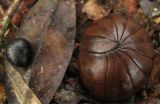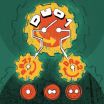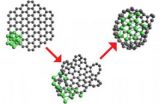(Press-News.org) Philadelphia – Though Twitter boats 645 million users across the world, only 14 percent of health policy researchers reported using Twitter – and approximately 20 percent used blogs and Facebook – to communicate their research findings over the past year, according to a new study from the Perelman School of Medicine at the University of Pennsylvania. In contrast, sixty-five percent used traditional media channels, such as press releases or media interviews. While participants believed that social media can be an effective way to communicate research findings, many lacked the confidence to use it and felt their academic peers and institutions did not value it or respect it as much as traditional media and direct contact with policy makers. However, the authors note that when used effectively, social media channels could present a major opportunity for connecting with both policy makers and the general public. Full results of the study, one of the first of its kind, are published online today in the journal Health Affairs, and will be presented as a plenary session during this weekend's annual AcademyHealth conference in San Diego, CA.
The study, a survey of 215 health and health-policy researchers (primarily MDs and PhDs), comes as academic journals, public health agencies, and health care organizations increasingly use social media to communicate health-related information. It also comes at a time when the nation is embarking on major changes to the health care system – a time when health policy research evidence is increasingly important.
"Our study uncovered four central findings," explained lead author, David Grande, MD, MPA, assistant professor of Medicine at Penn Medicine. "First, most health policy researchers are not using social media to communicate their research results, which could be a significant missed opportunity to expose a larger audience to important health news and findings."
Results of the study also reveal that researchers worry about how their peers and home institutions perceive social media, and that many describe it as replete with opinion and 'junk' and are concerned about presenting their scientific results in such settings. However, Grande notes that participants became more confident about social media when given examples of how the channels could be used effectively. For example, many thought that they could not communicate anything beyond the 140-character limit on Twitter, despite the common practice of including links to more substantive content. Understanding how to use these tools, the authors say, could alleviate concerns about the information being superficially presented.
Finally, the study shows that junior faculty members are more positively predisposed than their senior colleagues about social media. This, Grande says, could be a result of greater familiarity with it from other aspects of their lives, or it might be because senior faculty members have greater access to policy makers owing to their stature and reputation. Regardless, the authors suggest there are considerable benefits to using the tools for research dissemination.
"Historically, there has been a significant communication gap between researchers, on the one hand, and policy makers and the public at large, on the other," said senior author Zachary Meisel, MD, assistant professor of Emergency Medicine at Penn. "Social media channels are promising tools for closing this gap, provided they are used appropriately and effectively. As a first step, medical schools and health care institutions should help to educate researchers on how to properly use these channels to circulate their research findings and discuss implications."
INFORMATION:
In addition to Grande and Meisel, other Penn authors are Jane Seymour, Adeline Goss, and Austin Kilaru. Sarah Gollust, a former Robert Wood Johnson Foundation Health & Society Scholar at the University of Pennsylvania, is also a co-author, as is Maximilian Pany from Swarthmore College.
Penn Medicine is one of the world's leading academic medical centers, dedicated to the related missions of medical education, biomedical research, and excellence in patient care. Penn Medicine consists of the Raymond and Ruth Perelman School of Medicine at the University of Pennsylvania (founded in 1765 as the nation's first medical school) and the University of Pennsylvania Health System, which together form a $4.3 billion enterprise.
The Perelman School of Medicine has been ranked among the top five medical schools in the United States for the past 17 years, according to U.S. News & World Report's survey of research-oriented medical schools. The School is consistently among the nation's top recipients of funding from the National Institutes of Health, with $392 million awarded in the 2013 fiscal year.
The University of Pennsylvania Health System's patient care facilities include: The Hospital of the University of Pennsylvania -- recognized as one of the nation's top "Honor Roll" hospitals by U.S. News & World Report; Penn Presbyterian Medical Center; Chester County Hospital; Penn Wissahickon Hospice; and Pennsylvania Hospital -- the nation's first hospital, founded in 1751. Additional affiliated inpatient care facilities and services throughout the Philadelphia region include Chestnut Hill Hospital and Good Shepherd Penn Partners, a partnership between Good Shepherd Rehabilitation Network and Penn Medicine.
Penn Medicine is committed to improving lives and health through a variety of community-based programs and activities. In fiscal year 2013, Penn Medicine provided $814 million to benefit our community.
Study shows health policy researchers lack confidence in social media for communication
Tweeting, blogging, Facebook viewed as professionally higher risk than traditional media
2014-06-06
ELSE PRESS RELEASES FROM THIS DATE:
Evolution of a bimetallic nanocatalyst
2014-06-06
Atomic-scale snapshots of a bimetallic nanoparticle catalyst in action have provided insights that could help improve the industrial process by which fuels and chemicals are synthesized from natural gas, coal or plant biomass. A multi-national lab collaboration led by researchers with the U.S. Department of Energy (DOE)'s Lawrence Berkeley National Laboratory (Berkeley Lab) has taken the most detailed look ever at the evolution of platinum/cobalt bimetallic nanoparticles during reactions in oxygen and hydrogen gases.
"Using in situ aberration-corrected transmission electron ...
Tougher penalties credited for fewer casualties among young male drivers
2014-06-06
VIDEO:
A new Western University study led by Dr. Evelyn Vingilis has found a significant decline in speeding-related fatalities and injuries among young men in Ontario since the province's tough extreme...
Click here for more information.
A new study out of Western University (London, Canada) has found a significant decline in speeding-related fatalities and injuries among young men in Ontario since the province's tough extreme speeding and aggressive driving laws were introduced ...
Endoscope with an oxygen sensor detects pancreatic cancer
2014-06-06
JACKSONVILLE, Fla. — June 6, 3014 — An optical blood oxygen sensor attached to an endoscope is able to identify pancreatic cancer in patients via a simple lendoscopic procedure, according to researchers at Mayo Clinic in Florida.
The study, published in GIE: Gastrointestinal Endoscopy, shows that the device, which acts like the well-known clothespin-type finger clip used to measure blood oxygen in patients, has a sensitivity of 92 percent and a specificity of 86 percent.
MULTIMEDIA ALERT: Video and audio are available for download on the Mayo Clinic News Network.
That ...
Magnetic moment of the proton measured with unprecedented precision
2014-06-06
One of the biggest riddles in physics is the apparent imbalance between matter and antimatter in our universe. To date, there is no explanation as to why matter and antimatter failed to completely annihilate one another immediately after the big bang and how the surplus matter was created that went on to form the universe as we know it. Experiments conducted at Johannes Gutenberg University Mainz (JGU) have contributed towards a resolution of this problem. For the first time a direct and high-precision measurement of the magnetic moment of the proton has been conducted ...
A new way to make laser-like beams using 250x less power
2014-06-06
ANN ARBOR – With precarious particles called polaritons that straddle the worlds of light and matter, University of Michigan researchers have demonstrated a new, practical and potentially more efficient way to make a coherent laser-like beam.
They have made what's believed to be the first polariton laser that is fueled by electrical current as opposed to light, and also works at room temperature, rather than way below zero.
Those attributes make the device the most real-world ready of the handful of polariton lasers ever developed. It represents a milestone like none ...
New species of ancient chirping giant pill-millipedes from Madagascar already threatened
2014-06-06
An international team of researchers comprised of Thomas Wesener, Museum Koenig, Bonn, Daniel Le, Field Museum, Chicago and Stephanie Loria, American Museum of Natural History, New York, discovered seven new species of chirping giant pill-millipedes on Madagascar. The study was published in the open access journal ZooKeys.
The species discovered all belong to the genus Sphaeromimus, which is Latin for 'small ball animal'. However, the designation 'small' is not always true for the members of the genus as one of the newly discovered species surprises with a size larger ...
Probiotics prevent deadly complications of liver disease
2014-06-06
Bethesda, MD (June 6, 2014) — Probiotics are effective in preventing hepatic encephalopathy in patients with cirrhosis of the liver, according to a new study in Clinical Gastroenterology and Hepatology, the official clinical practice journal of the American Gastroenterological Association. Hepatic encephalopathy is a deterioration of brain function that is a serious complication of liver disease.
"This rigorous new research finds that probiotics modify the gut microbiota to prevent hepatic encephalopathy in patients with cirrhosis of the liver," said David W. Victor III, ...
Shatterproof screens that save smartphones
2014-06-06
University of Akron polymer scientists have developed a transparent electrode that could change the face of smartphones, literally, by making their displays shatterproof.
In a recently published scientific paper, researchers demonstrated how a transparent layer of electrodes on a polymer surface could be extraordinarily tough and flexible, withstanding repeated scotch tape peeling and bending tests. This could revolutionize and replace conventional touchscreens, according to Yu Zhu, UA assistant professor of polymer science. Currently used coatings made of indium tin ...
Breakthrough study solves plant sex mystery
2014-06-06
A team of biologists from the University of Leicester has solved a mystery surrounding how plants have sex.
The researchers have discovered a pair of proteins made by flowering plants that are vital for the production of the sperm present within each pollen grain.
Scientists already knew that flowering plants, in contrast to animals, require not one, but two sperm cells for successful fertilisation: one to join with the egg cell to produce the embryo and one to join with a second cell to produce the nutrient-rich endosperm inside the seed.
The mystery of this 'double ...
Method of nickel-carbon heterofullerenes synthesis presented
2014-06-06
Scientists from several British, Spanish and Russian research centers (MIPT, Institute for Spectroscopy RAS, Kurchatov Institute and Kintech Lab Ltd) have come up with a method of synthesizing a new type of nickel-carbon compound. The article titled Formation of nickel-carbon heterofullerenes under electron irradiation has been published by Dalton Transactions and is available as a pre-print at arxiv.org. The first author of the article is Alexander Sinitsa, an MIPT student, and the leading author is Andrey Popov (Institute for Spectroscopy RAS, 1989 MIPT graduate).
Heterofullerenes ...
LAST 30 PRESS RELEASES:
Making lighter work of calculating fluid and heat flow
Normalizing blood sugar can halve heart attack risk
Lowering blood sugar cuts heart attack risk in people with prediabetes
Study links genetic variants to risk of blinding eye disease in premature infants
Non-opioid ‘pain sponge’ therapy halts cartilage degeneration and relieves chronic pain
AI can pick up cultural values by mimicking how kids learn
China’s ecological redlines offer fast track to 30 x 30 global conservation goal
Invisible indoor threats: emerging household contaminants and their growing risks to human health
Adding antibody treatment to chemo boosts outcomes for children with rare cancer
Germline pathogenic variants among women without a history of breast cancer
Tanning beds triple melanoma risk, potentially causing broad DNA damage
Unique bond identified as key to viral infection speed
Indoor tanning makes youthful skin much older on a genetic level
Mouse model sheds new light on the causes and potential solutions to human GI problems linked to muscular dystrophy
The Journal of Nuclear Medicine ahead-of-print tip sheet: December 12, 2025
Smarter tools for peering into the microscopic world
Applications open for funding to conduct research in the Kinsey Institute archives
Global measure underestimates the severity of food insecurity
Child survivors of critical illness are missing out on timely follow up care
Risk-based vs annual breast cancer screening / the WISDOM randomized clinical trial
University of Toronto launches Electric Vehicle Innovation Ontario to accelerate advanced EV technologies and build Canada’s innovation advantage
Early relapse predicts poor outcomes in aggressive blood cancer
American College of Lifestyle Medicine applauds two CMS models aligned with lifestyle medicine practice and reimbursement
Clinical trial finds cannabis use not a barrier to quitting nicotine vaping
Supplemental nutrition assistance program policies and food insecurity
Switching immune cells to “night mode” could limit damage after a heart attack, study suggests
URI-based Global RIghts Project report spotlights continued troubling trends in worldwide inhumane treatment
Neutrophils are less aggressive at night, explaining why nighttime heart attacks cause less damage than daytime events
Menopausal hormone therapy may not pose breast cancer risk for women with BRCA mutations
Mobile health tool may improve quality of life for adolescent and young adult breast cancer survivors
[Press-News.org] Study shows health policy researchers lack confidence in social media for communicationTweeting, blogging, Facebook viewed as professionally higher risk than traditional media






